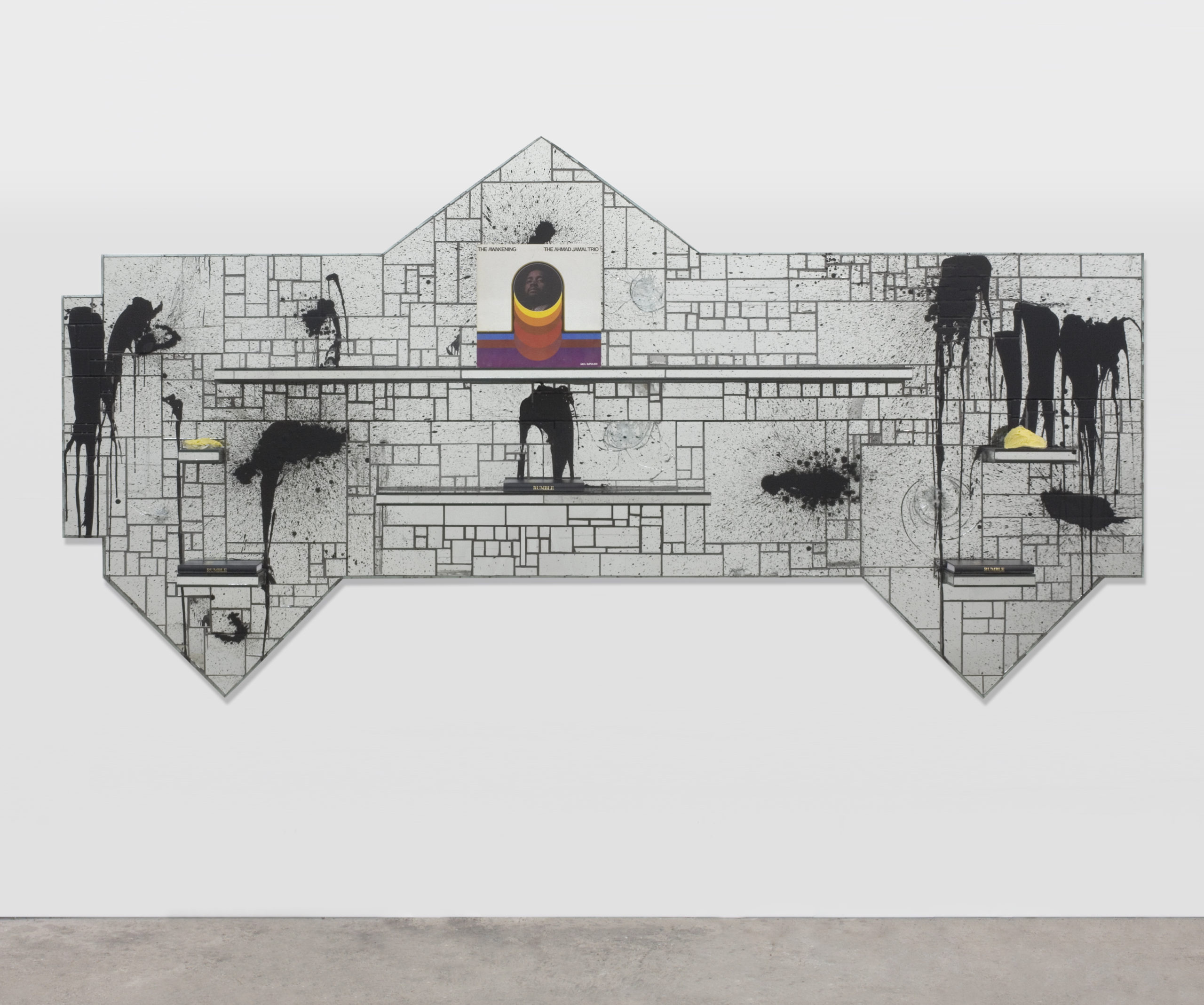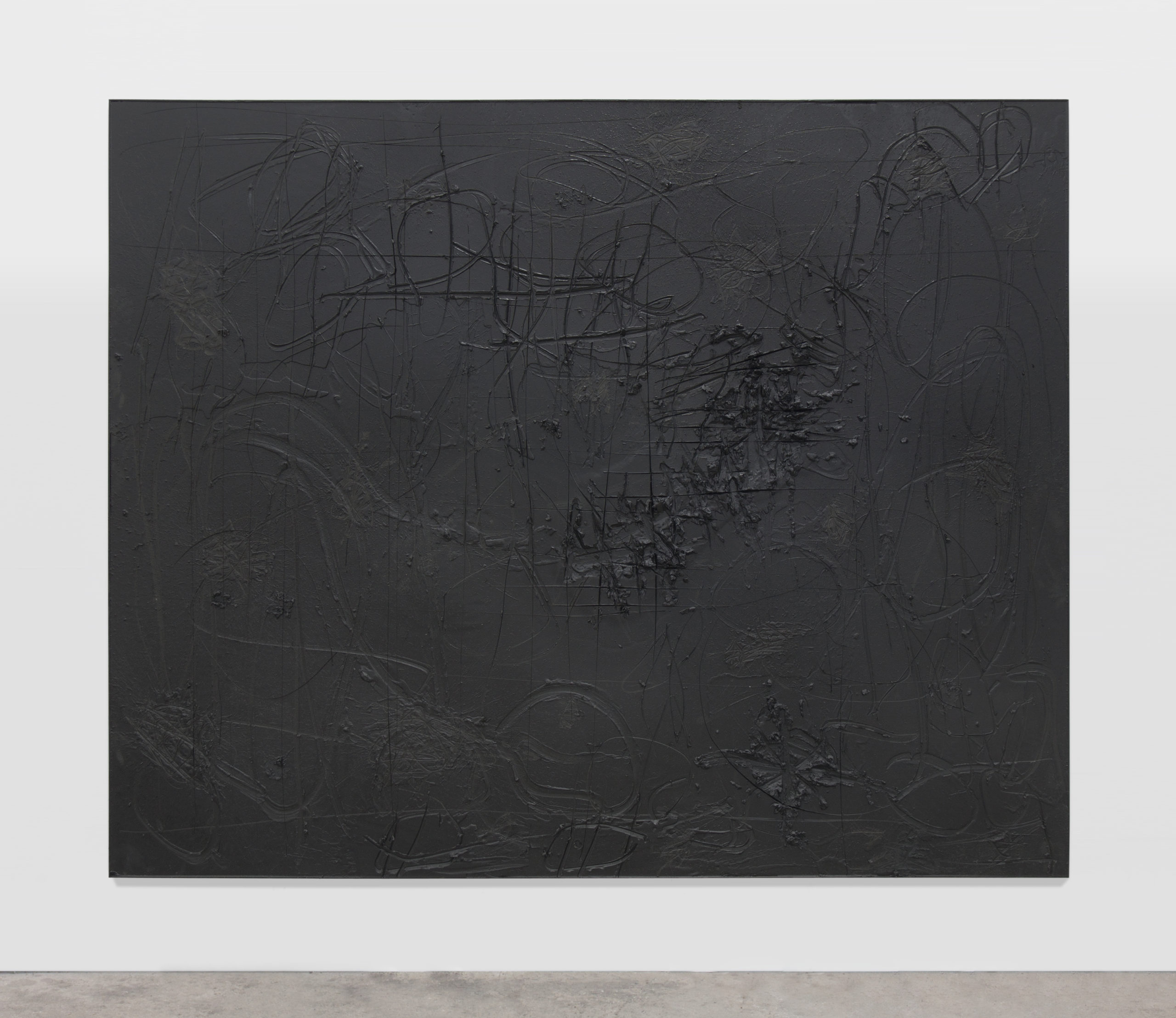
The Awakening, 2011
Rashid Johnson
The work was part of Johnsons show entitled «Rumble». The work is a mirrored tile composition, punctuated by small shelves. Each shelf holds an everyday object that is significant to Johnson but that, removed from context, suggests a mysterious canon. The mirrored-tile shelf sculpture is sporting old vinyl-record covers, oyster shells filled with shea butter and stacks of books bound in black leather emblazoned in gold on the spine with negrosis (defined by Urban Dictionary as the process of becoming a mad gangster). A book entitled «Rumble» lies on one of the shelves of the work. Johnson makes mystical works that playfully engage black history through a personal yet shamanistic handling of the objects, personalities and related ephemera. Johnson’s mixed-media practice incorporates a wide-range of everyday materials and objects, including wax, wood, steel, brass, shea butter, ceramic tile, books, records, VHS tapes, live plants, and CB radios. With shamanistic inspiration from both African-American and art history, many of Johnson’s more recent works employ these materials in a way that suggests an indefinite form of mysticism and a role as devotional objects. RUMBLE, the name of Chicago-artist Rashid Johnson’ show at Hauser & Wirth New York, takes its name from the legendary 1974 fight between Muhammad Ali and George Foreman’s ‘Rumble in the Jungle’ in the former Zaire. The fight was orchestrated by the flamboyant African-American prizefight promoter Don King. When Johnson discovered that King used to live in the converted apartment of 32 East 69th Street, which now serves as Hauser & Wirth’s New York exhibition space, he was inspired to create a work relating to the legendary boxing promoter and his place in history.At a time in America when black people were reclaiming their relationship to Africa, Don King was waving flags and gleefully declaring himself “the living attestation of the American dream, the extolment of this great nation”, Johnson says: “He was the archetype of a new Negro patriot, which was an unthinkable concept for just about every black person in America at the time.” Rashid looks at the extreme and contradictory cultural ideas and symbols that emerged during the 1970s and explored what he calls the “space in-between”. In Johnson’s own words: “One moment, everyone was wearing dashikis and looking for their African roots. Suddenly they all stopped and they were listening to hip-hop and watching shows on the Black Entertainment Network. I’m interested in exploring that sort of seismic change, looking into the space between things that came before and after.”
